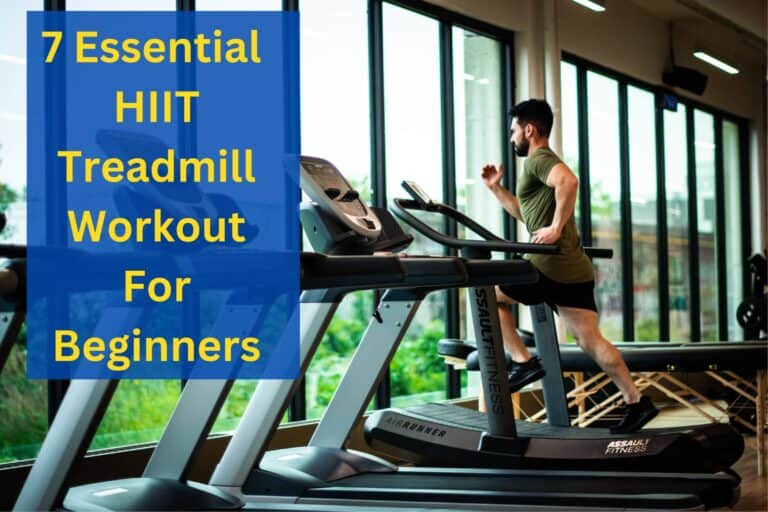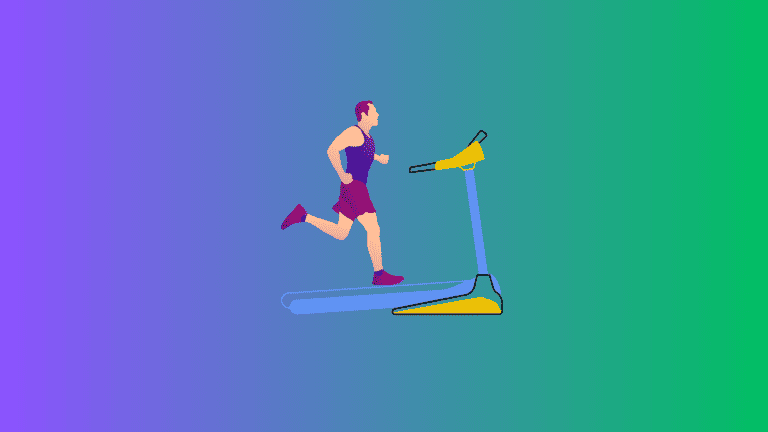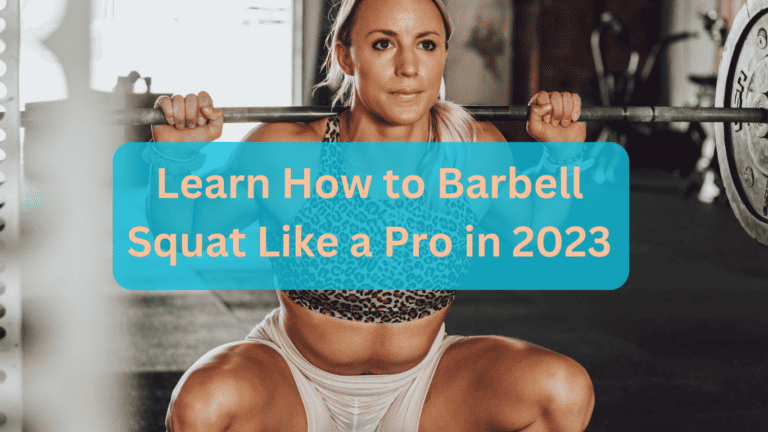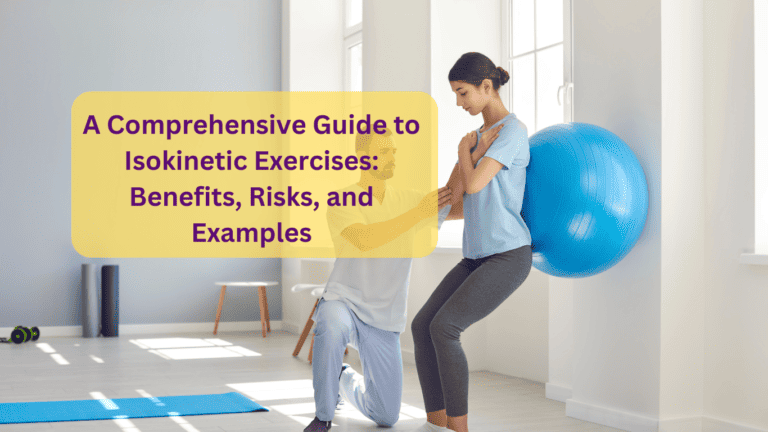29 Best Erector Spinae Exercises For Stronger Back

Are you tired of slouching over your desk all day, leading to poor posture and upper back pain?
Look no further than these 29 highly effective erector spinae exercises for a stronger back. By specifically targeting the muscles responsible for maintaining proper spinal alignment, these exercises will help alleviate chronic pain and prevent future injuries.
Whether you’re a gym enthusiast or simply looking for ways to improve your posture, these exercises are suitable for all fitness levels. But don’t just take our word for it – keep reading to learn more about each exercise and start taking steps towards a stronger, healthier back today.
What Is Erector Spinae Exercise?
Theector spinae muscles are crucial muscles that connect from the lower back to the neck, facilitating spinal movement and maintaining proper posture. As an essential part of the core muscle group, strengthening these muscles can provide exceptional back support, especially during activities that involve heavy lifting.
Incorporating exercises like back extensions enhance the strength of the erector spinae and targets multiple muscle groups in the back and hips. By engaging these muscles, you can promote overall stability and resilience in your body.
One effective method for targeting these muscles is utilizing a back extension machine. This involves lying face down and lifting the upper body off the machine. Another great way to strengthen the erector spinae muscle is by using resistance bands.
Additionally, incorporating other exercises can also be beneficial for strengthening the back muscles. By including erector spinae exercises in your workout routine, you can enhance overall back health and reduce the risk of injury during daily movements.
Related Post: Comprehensive Guide to Isokinetic Exercises
How Do Erector Spinae Muscles Become Weak?
Several factors contribute to the weakening of erector spinae muscles. These include weight gain, reduced physical activity, prolonged periods of bed rest or sitting in the office, inadequate stretching, surgical procedures, injuries, accidents, and more.
Research that excessive sitting can have detrimental effects on health, comparable to those caused by smoking.
Benefits of Doing Erector Spinae Exercise
By dedicating a few minutes out of your day to strengthening the erector spinae, you can reap significant benefits. These include:
- Improved posture
- Enhance Core stability
- Reduced risk of injury
- Increased muscle endurance and strength
- Enhanced flexibility in the lower back region
- Decrease lower back pain
By engaging these muscles regularly, you can improve your overall performance during activities that involve lifting, bending, and pulling. Additionally, these exercises are a great way to reduce chronic back pain and improve muscular balance in the body. Incorporating these exercises into your workout regimen can provide long-term benefits for your health and well-being.
How Often Should You Do Erector Spinae Training?
When it comes to determining how often you should do erector spinae exercises, there is no one-size-fits-all answer. Your frequency and intensity of the workouts will depend on your individual goals and fitness level.
In general, performing these exercises two to three times a week is sufficient for maintaining muscle health in the lower back region. However, if you aim to tone and build muscle mass, increasing the frequency of your workouts can be an effective approach to achieving this goal.
For beginners, it is recommended to start with one to two workouts per week and gradually increase both frequency and intensity as your fitness level improves. It is important to avoid overexertion and excessive speed to prevent injuries.
It is crucial to prioritize listening to your body and incorporating rest days when necessary. Consistency in your erector spinae training is key to reaping long-term benefits from these exercises. Keep reading for some examples of erector spinae exercises that you can incorporate into your workout routine today.
35 Best Erector Spinae Exercises for a Stronger Back
1. Cat-Cow Pose
The Cat-Cow Pose is a gentle exercise that helps to warm up the spine and hips. This move can be done anywhere, with or without props.
- Start by on your hands and knees in a tabletop position.
- As you inhale, arch your back by pushing your belly button towards the floor while lifting your head and tailbone towards the sky.
- Then as you exhale, round your back by contracting your abdominals and tucking your chin towards your chest.
2. Arm Haulers
The Arm Haulers exercise is an effective way to strengthen your lower back muscles. It can also be used as a form of dynamic stretching.
Start in a standing position with your feet hip-distance apart and arms at your sides.
Raise both arms up and back, keeping them straight, until they reach shoulder level.
Then, rapidly lower them back down to your sides in a controlled motion
3. Prone Cobra
The Prone Cobra exercise is an effective way to strengthen the lower back muscles. It can also help to improve posture and reduce lower back pain.
- Start by lying face down on a mat with your palms flat on the ground alongside your chest.
- Keeping your legs together and abdominals engaged, slowly lift your head and chest off the ground.
- Hold this position for a few seconds before slowly lowering your chest and head back down to the starting position.
- Repeat this movement for 10–15 reps.
4. Bird Dog Extension
The Bird Dog Extension is a great way to strengthen the spinal erectors and improve balance.
- Begin on all fours with your hands directly underneath your shoulders and knees directly underneath your hips.
- Engage your core as you simultaneously lift one leg and the opposite arm straight out from the body. Be sure to keep your abdominal muscles engaged throughout the exercise.
- Hold this position for a few seconds before slowly lowering your limb back down to the starting position.
- Repeat this movement for 10–15 reps on each side.
5. Reverse Plank Holds
Reverse Plank Holds are an effective way to strengthen the lower back muscles and glutes.
- Begin by sitting down on a mat with your legs straight and feet slightly apart.
- Place your palms flat on the ground beside your hips, fingers pointing forward.
- Lift your body off the ground, forming a diagonal line from your head to your toes. Keep your abdominals engaged throughout the exercise.
- Hold this position for a few seconds before slowly lowering your body back down to the starting position.
- Repeat this movement for 10–15 reps.
- To make the exercise more challenging, you can lift one leg in the air while maintaining balance and form.
- Hold this leg in the air for a few seconds before returning it to the starting position and repeating it on the other side.
- This is an effective way to strengthen your core as well as improve balance and stability.
6. Bent-Over Rows
Bent-over rows exercise is a great exercise for back muscles as it helps strengthen the upper and lower back muscles.
- Begin standing with your feet hip-width apart, holding a barbell or dumbbell in each hand at arm’s length.
- Bend your knees slightly and hinge forward at your hips, so that your torso is almost parallel to the floor and the weights hang directly below your shoulders.
- Keeping your back slightly arched, pull the weights up towards your chest until your elbows are at 90 degrees.
- Lower them back down to the starting position in a controlled manner.
- Repeat this movement for 10–15 reps on each side.
- To make the exercise more challenging, you can use heavier weights or perform single-arm rows on one side at a time.
- This exercise is great for strengthening your back and improving posture.
7. Single-Arm Deadlift
The deadlift is a highly effective exercise for strengthening the extensor muscles. By incorporating the single-arm deadlift, you can specifically target your posterior chain muscles, as it emphasizes one side of your body at a time. This variation not only adds challenge but also brings heightened attention to specific muscle groups, promoting the development of strong erector spinae muscles.
- Begin standing with your feet hip-width apart, holding a barbell or dumbbell in one hand at arm’s length.
- Bend your knees slightly and hinge forward at your hips, so that your torso is almost parallel to the floor and the weight hangs directly below your shoulder.
- Keeping your back slightly arched, drive your hips forward and pull the weight up towards your chest until your arm is straight.
- Slowly lower the weight back down to the starting position in a controlled manner.
- Repeat this movement for 10–15 reps on each side.
- To make the exercise more challenging, you can use heavier weights or perform single-leg deadlifts on one side at a time.
- This exercise is great for strengthening your lower body and improving balance.
- You can also perform this exercise with only your body weight, making it a great full-body workout.
8. Quadruped Rocking
Quadruped rocking is an excellent exercise for enhancing core strength and activating the muscles in the upper and lower back. Throughout this exercise, the erector spinae muscles are engaged as you strive to maintain a steady balance and exert control over your movements. It is a highly effective way to target and challenge these specific muscle groups, promoting overall stability and mobility.
- Begin on all fours with your hands directly underneath your shoulders and your knees beneath your hips.
- Keeping your head in line with your spine, draw in your abdominals, glutes, and quads.
- Rock back onto your heels, allowing your forehead to dip towards the floor while simultaneously raising your hips towards the ceiling.
- Hold this position for a few seconds before returning to the starting position in one controlled movement.
- Repeat 10 to 15 times.
- Make sure you keep your core engaged throughout the entire exercise.
- To make this exercise more challenging, you can add a lightweight or increase the hold time.
- This exercise is great for strengthening the core and improving balance and coordination. It also helps to improve posture by activating your stabilizing muscles. With regular practice, you will soon notice improvements in your physical strength and stability.
- Try adding this exercise to your routine for optimal results. You can also use it as part of a warm-up before other exercises or as an active recovery between sets.
9. Barbell Pullovers
Barbell pullovers focus on the Latissimus dorsi muscles, although they don’t directly target the erector spinae. However, the lats muscle provides support to the spine, and this exercise aids in strengthening them.
- Start by lying down on a bench with your feet flat on the floor, holding a barbell above your chest with both hands.
- Use an overhand grip (palms facing away from you) while keeping your elbows slightly bent and squeezing your shoulder blades together.
- Keeping your arms straight, lower the barbell behind your head until it is at shoulder height.
- Return to the starting position and repeat 10–15 times.
- Make sure you keep your core engaged throughout the entire exercise to ensure proper form and prevent injury.
- To make this exercise more challenging, try increasing the weight or adding a pause at the start and end of each rep.
- This exercise can help to strengthen the back and core muscles, improve posture, increase balance and coordination, and even boost your endurance.
10. Reverse Hyper
The reverse hyper is an excellent exercise that targets and strengthens the muscles responsible for back extension. Not only does it help to build core strength, but it also enhances mobility and flexibility in the hips, legs, and lower back. Incorporating this exercise into your routine can yield significant benefits for overall muscle development and functional movement.
- Start by lying face down on a bench with your feet resting on an elevated surface.
- Place your hands behind your head or at your sides for balance.
- Slowly lift your legs off the surface and extend them up towards the ceiling while squeezing your glutes.
- Pause for a moment, then slowly lower your legs back to the starting position.
- Repeat 10–15 times, making sure to maintain good form throughout the exercise.
- To make this exercise more challenging, try slowing down the tempo of the reps or adding a pause at both ends.
- For an added challenge, you can also do this exercise with one leg at a time to work on stability and coordination.
- The reverse hyper is great for increasing core strength, improving balance and coordination, and enhancing mobility in the hips and lower back. It’s also useful for athletes that rely on strong legs for their performance.
11. Seated Cable Rows
The seated cable row is another excellent exercise to target the muscles of your upper back and arms. It’s a great way to build strength, increase muscle mass, and improve posture. This exercise can also be beneficial for athletes who rely on pulling power or need to improve their grip strength.
- To perform this exercise, sit down in front of a low pulley machine with a V-bar attached.
- Make sure to sit up straight and keep your back flat throughout the exercise.
- Grasp the V-bar firmly with both hands and pull it towards your upper abs while squeezing your shoulder blades together.
- Pause for a moment, then slowly return to the starting position.
- Repeat 10–15 times, making sure to keep your form consistent throughout the exercise.
- For an added challenge, you can also do this exercise one arm at a time to work on your balance and coordination.
- You can also increase the weight or slow down the tempo of each repetition for an extra challenge.
- Regularly performing the seated cable row can help increase back strength, improve posture, and build muscle mass in the upper body.
12. Prone Back Extensions
The back extension is an excellent exercise for targeting the muscles of your posterior chain, specifically the lower back, glutes, and hamstrings. It effectively strengthens the core muscles in the back while also enhancing the entire posterior chain. This exercise offers significant benefits for athletes who depend on robust lower body strength to optimize their performance.
- To do this exercise, lie face down on the floor or an exercise mat.
- Place your hands behind your head and keep your elbows wide. Your legs should be straight with the feet slightly apart.
- Lift yourself up off the floor, bringing your torso towards the ceiling while pressing down through your toes.
- Hold for a moment at the top of the movement before slowly lowering back to starting position.
- Aim to do 15–20 repetitions, making sure to keep your core engaged throughout the exercise.
- This exercise is great for improving balance and stability in addition to developing strength in the core and back muscles. Plus, it’s a low-impact way of targeting these areas without putting strain on the joints. With regular practice, you can increase your range of motion and the amount of weight you can lift.
- For your workout, consider incorporating weight plates as a way to intensify the exercise. However, it is crucial to exercise caution and avoid using weights that exceed your body’s capacity, as this could lead to potential injuries.
13. Good Mornings
Good mornings are a fantastic compound exercise that effectively strengthens your hamstrings, glutes, and lower back. This exercise requires a barbell with weight and specifically targets the entire posterior chain. By incorporating good mornings into your routine, you can build strength in these areas and enhance your overall mobility.
- To do this exercise properly, begin by standing with your feet shoulder-width apart. You can hold a weight plate or barbell at arm’s length in front of your body.
- Keep your back straight and slowly bend forward at the waist until your torso is parallel to the floor.
- Then, return back to a standing position while engaging the core and glutes.
- Aim for 10–15 repetitions, gradually increasing the amount of weight as you become more comfortable with this exercise.
- Make sure to keep your chest up, and do not round your lower back as this can increase the risk of injury. avoid too much hip hinge or hyperextension in the lower back. Lastly, keep your breath steady to avoid getting lightheaded.
- When done correctly, this exercise can be an effective addition to your workout routine for strengthening the posterior chain and improving overall stability. Additionally, incorporating good mornings into regular training can help improve balance as well as posture over time. With consistent practice, you’ll be able to master this exercise and reap the benefits of a stronger posterior chain.
- Lastly, make sure to take rest days between workouts to allow your body ample time for recovery.
14. Bridge
The bridge exercise is a fantastic way to strengthen and tone your glutes, core, and hamstrings. What’s even better is that you can do it anywhere without any equipment. Not only does the bridge target lower back pain, but it also improves balance, coordination, flexibility, and stability while reducing discomfort. It’s important to note, however, that maintaining the correct form is crucial to avoid exacerbating any existing back pain.
- Start position with your back on the yoga mat or floor with your knees bent and feet flat on the ground. Make sure that your feet are hip-width apart for stability.
- Place your arms at the sides of your body, palms facing down.
- Slowly lift up your hips off the floor, keeping your spine straight and core engaged. Keep pushing through your heels and glutes as you do this.
- Once your hips are in line with your torso, hold the bridge for a few seconds before slowly lowering back down to the ground.
- As you become more comfortable in this position, you can increase the amount of time spent in the bridge or progress to more challenging variations such as single-leg bridges.
- Remember to always pay attention to your form and keep your core engaged throughout the exercise. This will help you make the most out of the bridge and reduce the risk of injury.
- Make sure to practice consistency with this exercise for the best results! Incorporate it into your regular workouts for maximum benefits.
15. Single-Leg Deadlifts
The single-leg deadlift is a highly effective exercise that targets the glutes and hamstrings while enhancing balance, coordination, and strength. Typically, a dumbbell or kettlebell is used to perform this movement. It is crucial to prioritize proper form during execution, as the incorrect technique may result in injuries. By diligently focusing on technique, you can reap the full benefits of this exercise and minimize the risk of harm.
- Start by standing on your right leg, holding a weight in your left hand at your side.
- Hinge at your hip while maintaining a straight back and a slight bend in your right knee.
- Reach down with the left hand, keeping the weight close to the body and extending through the heel of the standing leg.
- Keep lowering until you feel an intense stretch in your hamstring or until your torso is parallel to the ground.
- Reverse the motion, contracting the glutes and hamstrings as you stand back up.
- Repeat this movement on your left leg for an equal number of reps.
- As you become more comfortable with this exercise, feel free to challenge yourself by increasing the weight or duration of each set.
16. Deadlifts
Deadlifts are a top exercise for your entire backside, targeting your hamstrings, glutes, and lower back muscles. Use a barbell, dumbbell, or kettlebell to securely lift the weight with both hands, keeping your core tight to minimize injury risk. Proper form and technique are crucial for maximizing results and reducing harm.
- Start by standing behind the weight with your feet hip-width apart and toes slightly pointed outward.
- Hinge at the hips while keeping a straight back, slowly bending your knees and reaching down to grab the weight securely.
- Engage your core as you lift up the weight until you’re standing upright with arms extended and shoulders back.
- Squeeze your glutes and lower the weight to the floor in a controlled manner, returning to the starting position.
- Repeat this motion for an equal number of reps on both sides of your body.
- As you become more comfortable with this exercise, feel free to challenge yourself by increasing the weight or duration of each set.
- To prevent injury, be sure to practice proper form and technique throughout each set.
- You can also combine deadlifts with lighter exercises like wall sits and planks for an effective full-body workout.
- Additionally, focus on engaging your core throughout the entire range of motion to further target and strengthen your abdominal muscles.
- As you progress, consider adding a resistance band around your legs for added resistance. This will help challenge your body even more and promote further muscle growth.
- With dedication and consistency, deadlifts can be an effective way to train your erector spinae muscles and get stronger.
17. Banded Pull-Downs
Banded pull-downs are a great exercise for sculpting and strengthening the lats, traps, and rhomboids. This exercise can be done with either a resistance band or a cable machine.
- Begin by attaching a resistance band to an overhead bar or secure it in a door frame.
- Stand directly underneath the band with your feet hip-width apart and core engaged.
- Grasp the handles with an overhand grip and pull down towards your chest, keeping your elbows close to your body.
- Slowly return to the starting position and repeat this motion for a set number of reps.
- As you become more comfortable, try increasing the amount of resistance or duration of each set.
- As an added challenge, you can also incorporate pauses at the bottom of each rep to further target your muscles.
- With consistent practice and dedication, banded pull-downs are an effective way to strengthen and define your back muscles.
- Consider utilizing different grips such as wide grip or narrow grip for additional variety in your workout routine. This can help target different muscles in your back and prevent plateauing.
- Additionally, you can also experiment with single-arm pull-downs or alternating arms to further engage the core and challenge your body.
- With dedication and consistency, banded pull-downs can be an effective way to sculpt and strengthen your back muscles.
18. Rack Squat
Rack squatting is another exercise to strengthen the erector spinae muscles, gluteus, and posterior chain muscles. It helps to improve posture and reduce pain in the lower back.
- Start by standing in an upright position with feet shoulder-width apart, core engaged and hands clasped at chest level.
- Place a barbell on a squat rack that is at a comfortable height for you to lift from without straining your back muscles.
- Grasp the barbell with an overhand or underhand grip and lift it out from the rack.
- Take two steps back and lower yourself into a squat position, keeping your chest up throughout the movement.
- When you reach the bottom of your squat pause for a moment before pushing yourself back up to standing.
- As you stand back up, drive up through your glutes and push your hips forward to complete the rep.
- Aim for 3 sets of 10 reps with a heavier weight if possible, ensuring you maintain proper form throughout the exercise.
- As you become more comfortable with the rack squat, you can increase the challenge by adding pauses in between reps or using a band for added resistance.
19. Romanian Deadlifts
Romanian deadlifts strengthen the hamstrings, glutes, erector spinae, and lower back. This exercise can be done with either bodyweight or dumbbells.
- Begin by standing with your feet hip-width apart and core engaged.
- Bend over and grasp a pair of dumbbells or barbells with an overhand grip.
- With a slight bend in the knees, slowly hinge at the hips and lower the weights towards the floor while keeping your back flat.
- Once you feel a stretch in your hamstrings, squeeze your glutes and pull yourself back to a standing position.
- Slowly return to the start position and repeat this motion for a set number of reps.
- As you become more comfortable, try increasing the amount of weight or duration of each set.
- With consistent practice and dedication, Romanian deadlifts are an effective way to strengthen and condition your lower body muscles.
- Consider utilizing different grips such as wide grip or narrow grip for additional variety in your workout routine. This can help target different muscles in your lower body and prevent plateaus.
- Additionally, you can also experiment with alternating legs for an extra challenge to engage your core and stabilize the movement.
- With dedication and consistency, Romanian deadlifts can be an effective way to sculpt and strengthen your lower body muscles.
20. Supermans Exercise
The Supermans exercise is a great way to target the erector spinae muscles in your lower back. This exercise can also be done with props such as a stability ball or bench.
- Begin by lying face down on a mat with your legs together and arms extended out in front of you.
- Then, lift both your arms and legs off the ground as high as possible.
- Hold this position for a few seconds before slowly returning to the starting position.
- Repeat this movement for 10–15 reps.
21. Superman Exercise with Ball
The Superman Exercise with Ball is an advanced variation of the Superman exercise that specifically targets the erector spinae and posterior chain muscles by adding resistance. This exercise is highly effective for strengthening the lower back, glutes, and core muscles. It can be performed using a stability ball and is suitable for both home and gym workouts.
- Begin by lying face down on the ground in a prone position with your arms outstretched above your head. Place the ball between your feet and squeeze it with your feet.
- Engage your core muscles, glutes, and lower back muscles as you lift your arms and legs off the ground at the same time.
- Make sure to keep your hips steady throughout this exercise so that you don’t overextend any of the muscles involved.
- Hold this position for a few seconds before slowly lowering your legs and arms back down to the starting position.
- Repeat this movement for 10–15 reps.
22. Plank Exercise
The plank exercise is an excellent way to strengthen your core and back muscles simultaneously. It can be done with or without props, such as a stability ball or bench.
- Begin by getting into the plank position with your hands shoulder-width apart and feet hip-width apart.
- Make sure to keep your core engaged throughout the entire exercise, with your spine in a straight line from head to heels.
- Hold this position for 30–60 seconds before slowly returning back to the starting position.
- Repeat this movement for 3–5 sets of 30–60 seconds each.
- For beginners, start with the plank exercise on your elbows. As you get stronger, progress to the full plank position. Gradually building endurance will maximize the exercise benefits.
- For more advanced options, try different variations such as side planks or single-leg planks.
23. Reverse Snow Angel Exercise
The reverse snow angel exercise is a fantastic method for simultaneously engaging several upper body muscles, including the erector spinae and core. It effectively enhances strength, stability, and coordination while also promoting balance.
- Begin by lying on your stomach with your arms extended out to the side.
- Lift your legs up in the air slightly and slowly move them from side to side, as if you were making a snow angel in reverse.
- Make sure to keep your core engaged and maintain a slow and steady pace.
- Repeat this movement for 3–5 sets of 10–15 reps each.
- To increase the intensity, hold a dumbbell or medicine ball in your hands while performing the exercise. This will add more resistance and challenge both your upper body muscles and core.
24. Landmine Single Leg RDL
Landmine Single Leg RDL is a great exercise that strengthens the posterior chain muscles of the back and can help improve posture and stability.
- Set up a landmine bar to perform this exercise.
- Ensure you have your feet firmly planted on the ground and grip the landmine bar with one hand.
- Keeping your arms straight, bend at the hip so that your torso is parallel to the floor, with your free hand on the floor for balance.
- Lift your back leg off the ground and drive it backward until you feel a stretch in the front of your hip.
- Return to starting position and repeat for 10–15 reps before changing sides.
25. Hyperextensions
Hyperextensions are a great exercise to strengthen your back, glutes, and hamstrings.
- Start by lying face down on a hyperextension bench with your feet securely in place and hands behind your head.
- Keeping your body straight, slowly lift up until you feel the full stretch in your lower back.
- Slowly return to the starting position and repeat for 3–5 sets of 10–15 reps.
- For an extra challenge, use a weighted plate on your chest while performing the exercise.
26. Cable Lat Pulldowns
The Cable Lat Pulldown is an effective exercise that targets the lats, biceps, and rear deltoid muscles. It can be performed with a cable machine or resistance bands.
- Start by sitting on a bench with your feet firmly planted and your back straight. Grasp the cable bar or band securely in both hands, palms facing away from you.
- With your arms extended above your head, pull the bar or band down towards your chest as you squeeze your shoulder blades together at the bottom of the movement.
Make sure to keep your back straight and your elbows close to your body throughout this exercise.
- Slowly return the bar or band up to the starting position and repeat for 10–15 reps.
- Increase the weight if you need more of a challenge.
27. Cable Back Extensions
Cable Back Extensions are another effective exercise for strengthening your lower back, glutes, and hamstrings.
- Begin by positioning the cable machine at about hip height. Attach a handle or ankle strap to the machine and stand facing away from it.
- Grasp the handle or ankle strap securely with both hands and extend your arms out straight in front of you.
- Keeping your arms straight and your feet firmly planted, slowly bend forward at the hips until you feel a stretch in your lower back.
- Make sure to keep your back flat and your head up throughout this exercise.
- Slowly return to the starting position and repeat for 3–5 sets of 10–15 reps.
- Increase the weight if you need more of a challenge.
- You can also perform this exercise with one arm or leg at a time for increased intensity.
28. Sumo Deficit Deadlift
The Sumo Deficit Deadlift is an effective exercise for strengthening your glutes, hamstrings, and core.
- Begin by standing with your feet wider than shoulder-width apart. Place a small plate or weight between you and the barbell to create a deficit.
- Grasp the bar securely with both hands, palms facing away from you.
- Keeping your chest up, slowly lower yourself into a sumo squat position and grasp the bar with both hands.
- Drive your feet into the floor as you stand up to lift the barbell off the ground.
- Tightening your glutes and core as you lift. Keep your back straight throughout this exercise.
- Slowly lower the barbell back down to the ground and repeat for 3–5 sets of 10-15 reps.
- Increase intensity by holding weight plates in each hand or adding plates between you and the barbell. Prioritize form and gradually progress as you gain strength. Take breaks between sets to stay fresh and focused.
29. Bear Crawl
The Bear Crawl is an excellent full-body exercise that targets your core, shoulders, erector spinae, and glutes.
- Begin by getting down on all fours with your hands slightly wider than shoulder-width apart and your knees hip-width apart.
- Lift off the ground so that only your hands and feet are touching the floor. Keep your back in neutral and look straight ahead.
- Slowly step forward with your right hand and left foot, then bring your left hand and right foot to meet them.
- Continue alternating in this way for 10–15 reps for 2–3 sets.
- To increase the challenge, add weight plates to hold or wear a weighted vest during your Bear Crawl sets. Take breaks between sets to stay fresh and focused.
- To finish, take a few deep breaths and relax your body back into a neutral position on the floor. This breathing exercise will help reset your mind and heart rate before continuing with your workout.
- Incorporate the Bear Crawl into a circuit workout for an even more intense challenge. Alternate between sets of Bear Crawls and other exercises such as Squats, Pushups, Burpees, Pull-Ups, and Lunges.
Disclaimer: The information provided in this blog post is for educational and informational purposes only and should not be construed as medical advice or a substitute for professional medical guidance, diagnosis, or treatment. Always consult a qualified healthcare professional before starting any exercise program or changing your current routine. The author and publisher of this blog post are not responsible for any adverse effects, injuries, or consequences resulting from using or misusing the information provided. The reader assumes full responsibility for any actions taken based on the information presented in this blog post.
Conclusion
Back strengthening exercises are an important part of any physical fitness routine. Incorporating moves like the Deadlift, Bent-Over Row, and Bear Crawl into your weekly workout will help strengthen your back muscles, build core strength, and improve posture. Remember to focus on form, use lighter weights when necessary, and take breaks between sets to avoid injury. With a few modifications, these exercises can be tailored to any fitness level.
So what are you waiting for? Start building your stronger back today!
FAQs on Erector Spine Exercise
What type of exercise is best for the erector spinae?
Any type of exercise that targets the core and lower back can be beneficial. This includes planks, bridging, superman, bent-over rows, and deadlifts.
What are some potential risks associated with exercising my erector spinae?
It is possible to overstrain the muscles in the area which can cause discomfort or pain. To reduce your risk, start off with lightweight and do multiple sets of 10-15 repetitions for each exercise. Also, make sure you are using proper form and not pushing yourself too hard.
How often should I be doing erector spinae exercises?
For beginners, a frequency of one to two times a week is suitable for less active individuals, while two to three times a week works well for those who are more physically fit. As you gain familiarity with the exercises, you can gradually increase the frequency. However, it is crucial to allow sufficient rest between workouts to ensure your body has time to recover and heal.
Are there any tips for making my erector spinae workout more effective?
Yes! To get the most out of your erector spinae exercises, it is important to add variety to your routine. Incorporate different exercises each time you work out and use a progression system to challenge yourself over time. This will help you build strength and see better results in the long run. Additionally, make sure that you are keeping good form and not overexerting yourself.





